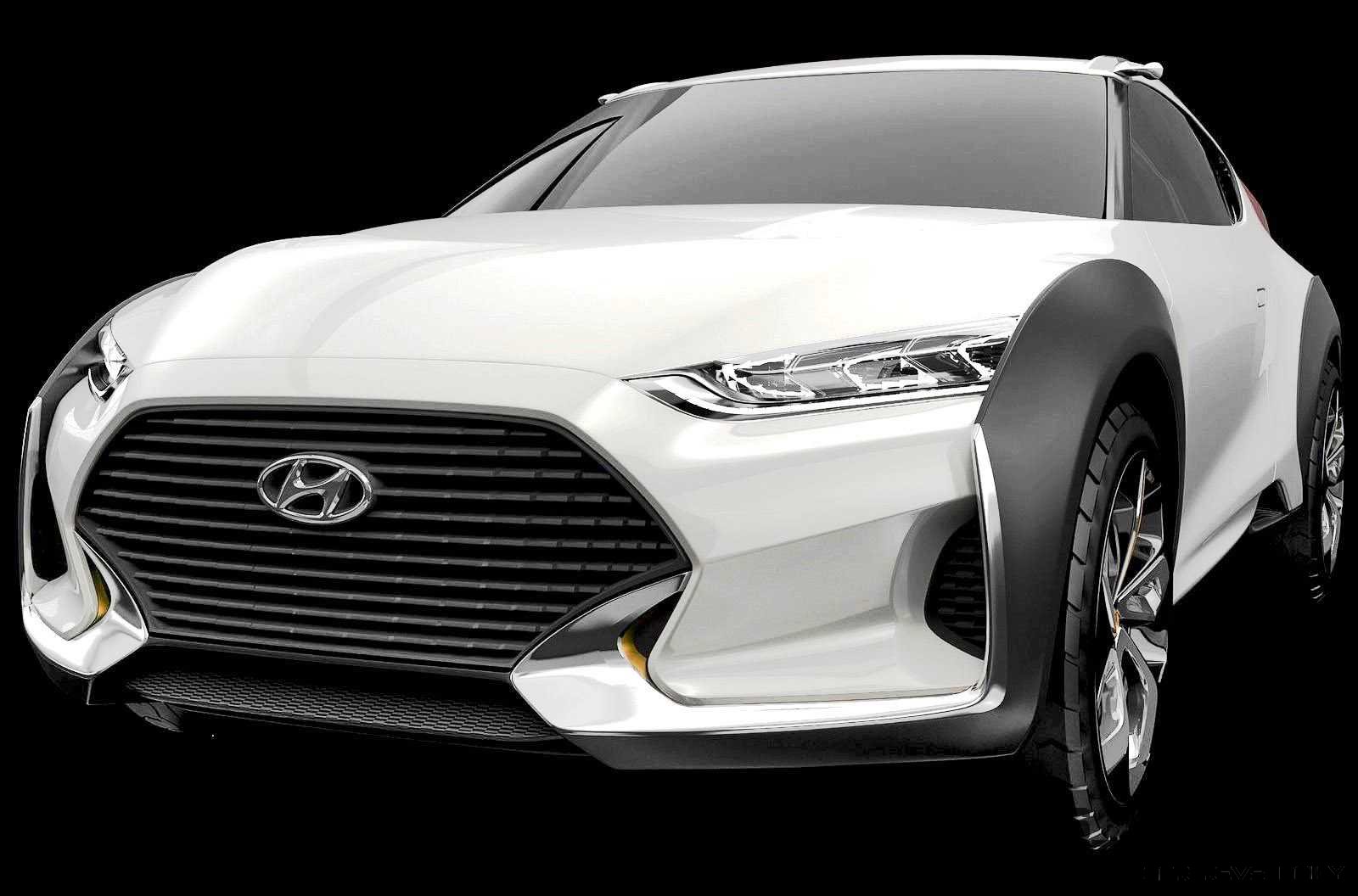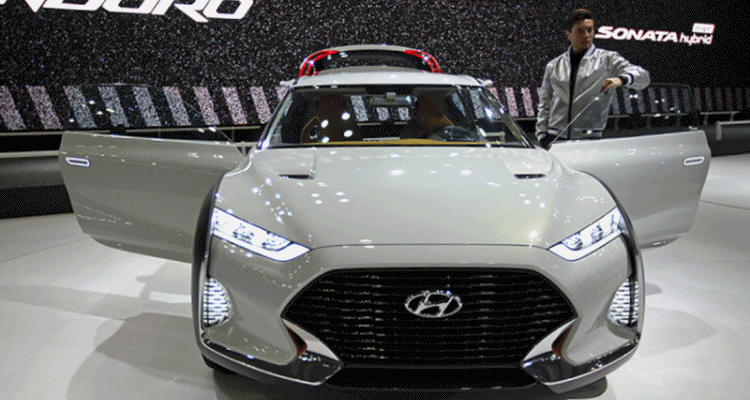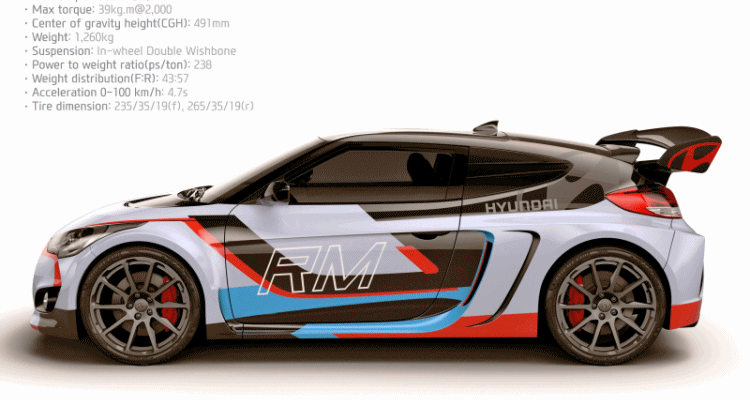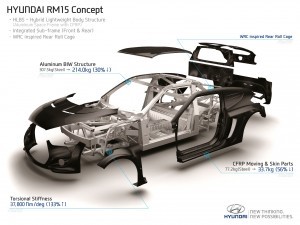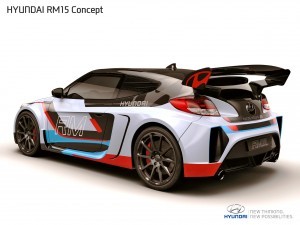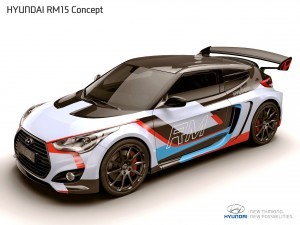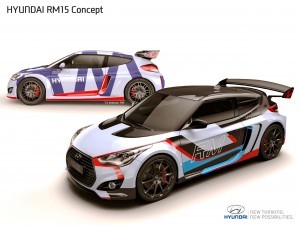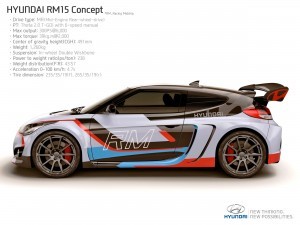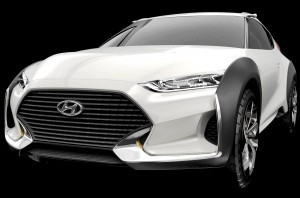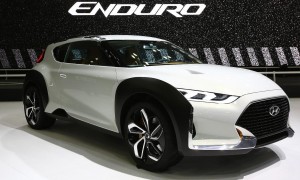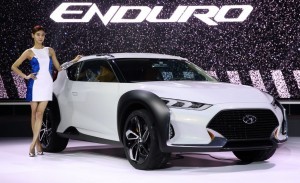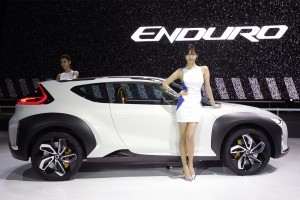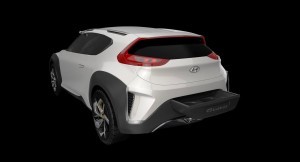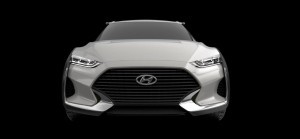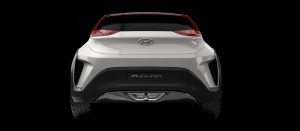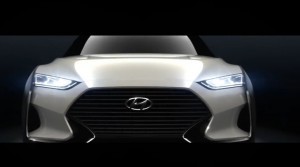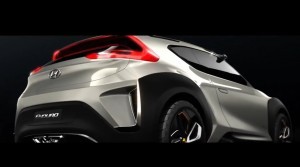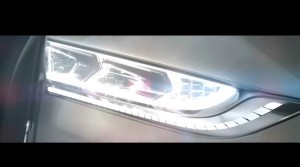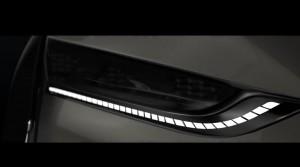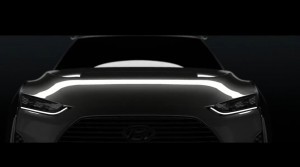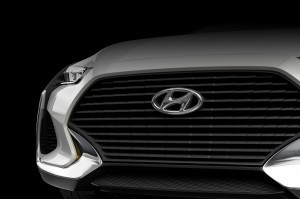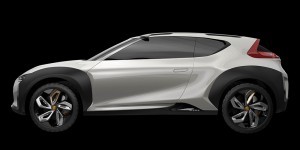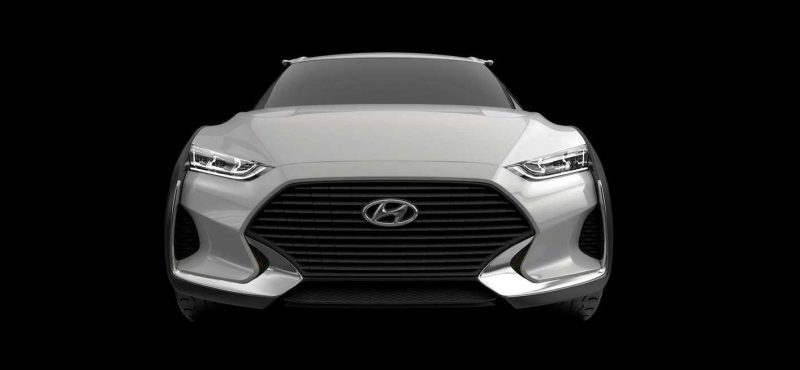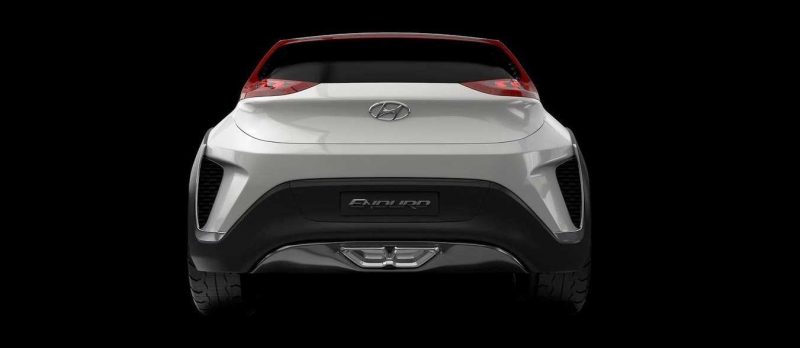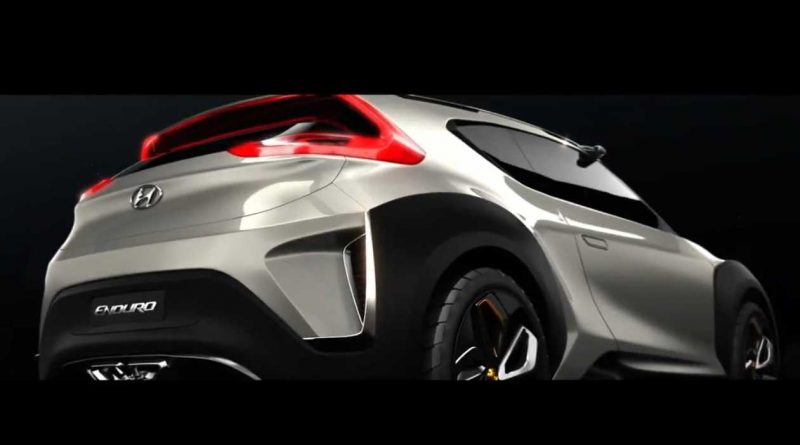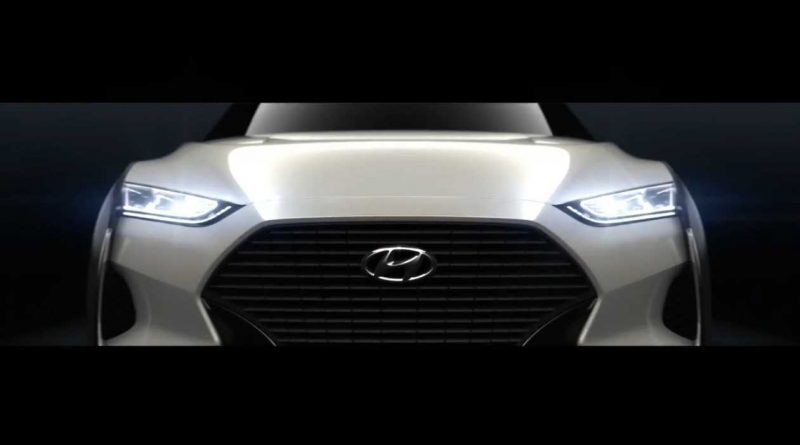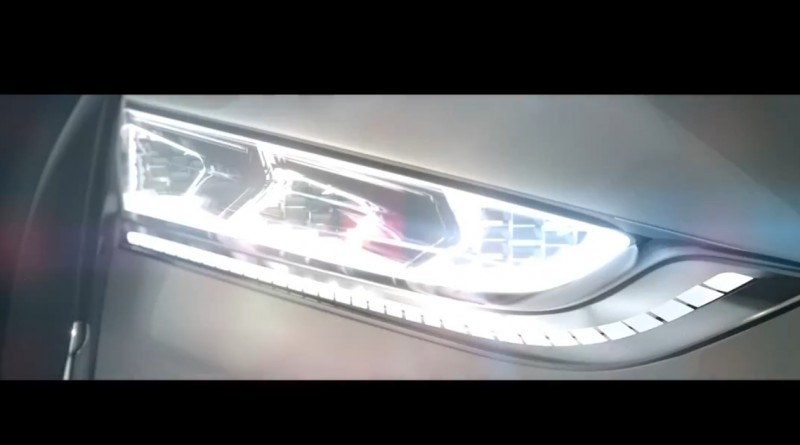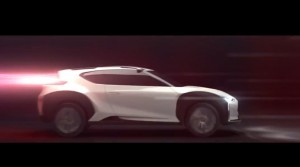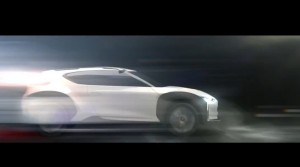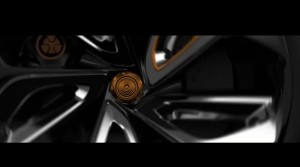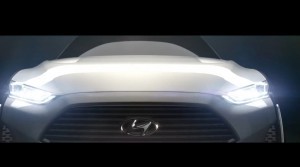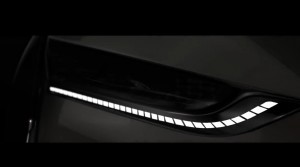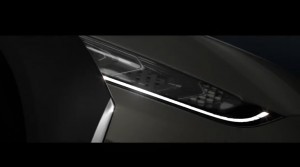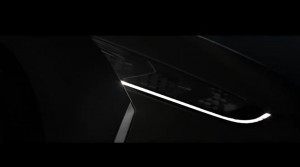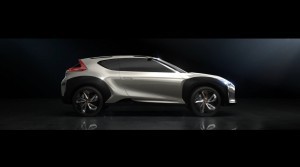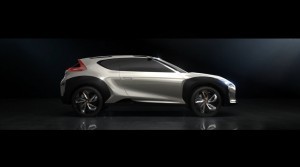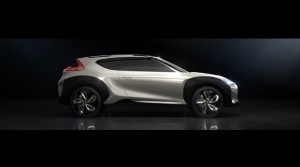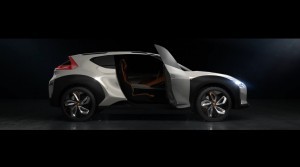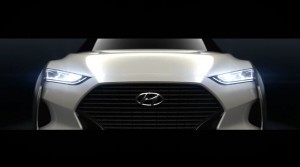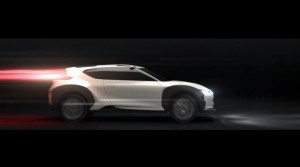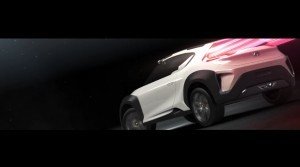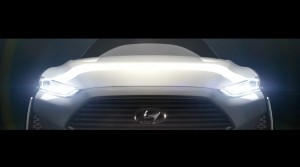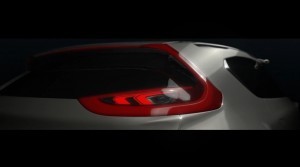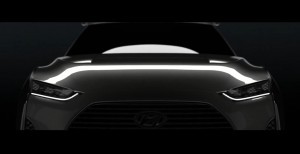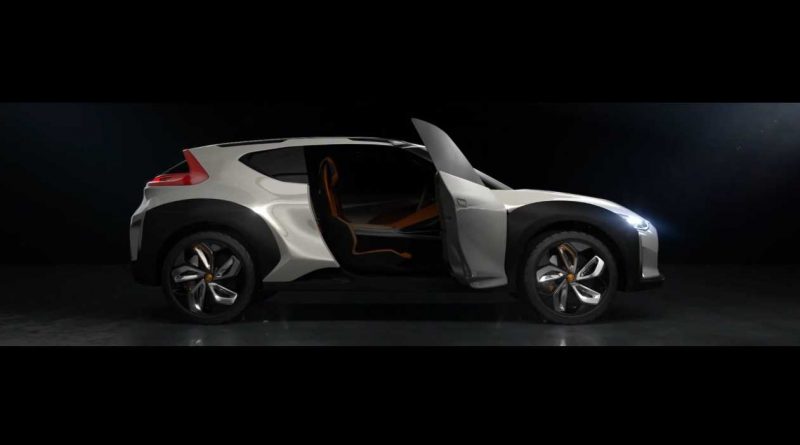 Hyundai’s home motor show is going on right now, and the firm has brought a pair of cool concepts to showcase the potential for future racing Veloster models.
Hyundai’s home motor show is going on right now, and the firm has brought a pair of cool concepts to showcase the potential for future racing Veloster models.
The Veloster is already the prime chassis focus for the Nurburgring 24H crew at Hyundai’s German R&D and design center. This is because the car is a fairly wide and low hatchback with style to battle the VW Scirocco. To date, the powertrains have been led by the turbocharged 1.6-liter engine delivering around 200 horsepower yet still needing work to get sprint times below 6.5 seconds.
The 2015 Veloster is fairly heavily revised with an all-new chassis and handling tune and a brand-new seven-speed dual clutch automatic. This twin-cog shifter is a fairly bold move toward meeting or exceeding VW hot hatch pace.
But where to go from here — to raise the profile of the Veloster package above even the pure rally cars?
2015 Hyundai RM15 Concept
A pair of sweet rides: the RM15 mid-engine concept with a 300-horsepower, 2.0-liter race turbo is a fantastic widebody hatch in the tradition of the Renaultsport Clio V6 — but truly race-prepped and ready for the track.
We admit, when we read “mid engine coupe concept” in the blurb, the RM15 was definitely not what we expected to find.
Even so, working on a mid-engine car is certainly an ambitious lift for the Veloster shape. Fine-tuning the handling of such a machine would challenge even Lotus, so likely a good exercise for Hyundai’s new sporty handling focus.
2015 Hyundai ENDURO Concept
This HND-12 Enduro concept takes a more style-led approach to evolving the Veloster race cred.
What if the RM15 needed a new and upgraded shell to take on the Dakar rally and other true off-road challenges?
Massive tires and a raised ride height mean the original fenders are peeled away and replaced by durable, snap-on composite fenders in contrast grey.
The third door is dropped in favor of a simple two-door shape, while the overall design becomes far more molten and fluid. Soft angles dominate the rear end, with a new high-mounted back glass in a roof less raked than the production Veloster. A ring of LED red brake lamp circles the rounded tailgate, while the Enduro also vents its fender heat from ducts in the back of its widebody fenders. 




So what is the lesson here?
Could these ideas be combined into a super sexy Rally Fighter of the future?
A production version of either is highly unlikely, but we like where their vision for a Dakar compact racer might lead.
More practically, this Enduro concept likely points to an upcoming super-mini SUV much smaller than the new Tucson.
Hyundai Motor introduces ‘Enduro’ lifestyle CUV concept
at 2015 Seoul Motor Show
· Urban crossover utility vehicle harmonizes with energetic, athletic lifestyles
· ‘The Professional Gear’ for drivers wanting to escape the ordinary
· Design concept is expressed in rugged, versatile yet sophisticated form language
April 2, 2015 – Hyundai Motor is celebrating the world premiere of its all-new design concept, the ‘Enduro’ lifestyle urban crossover utility vehicle (CUV), at the 11th Seoul Motor Show today (Thursday).
The name ‘Enduro’ is derived from ‘Endurance.’ Also, Enduro visually combines SUV look with rally motorcycle which compete in the world’s toughest rally events. The Enduro is designed as the perfect partner for individuals living in the modern city with energetic, athletic lifestyles. By combining robust forms with bold styling, Enduro releases a sense of adventure and freedom for driver and passengers.
Enduro is ‘The Professional Gear’ for drivers wanting to escape from the ordinary. It features a new interpretation of Hyundai’s design signature hexagonal front grille, now with a lower center of gravity creating a sense of stability. An aluminum aero blade connects the front fender to the grille, giving the Enduro a look of self-confidence.
Seen in profile, Enduro has the look of a crossover vehicle, with raised ground clearance, SUV-style fender cladding and a dark grey garnish to the lower parts of the car, which appear robust and protective, while expressing mobility and agility. The C-pillars are fitted with a unique aerodynamic air-blade to reduce drag and the side-skirts incorporate step bars for easier loading / unloading of the roof rack.
At the rear, the combination lamps form a continuous flow between the C-pillar and the rear spoiler. Like the Enduro’s front fascia treatment, an aluminum bumper spoiler flows from the rear fender and rear bumper creating a visual connection, as well as embracing the fog lamps. Detailed attention to the shaping of the rear fender’s volume has ensured the concept has an impressive road presence and a strong, stable stance.
Emotional, sensual and dynamic – a cabin designed with passion
Inside Enduro, the cabin is styled with the same enthusiasm and passion as the exterior. The Hyundai Advanced Design Team worked to create an emotional concept that expresses sensuality and dynamism, through organically interacting lines which generate an intensity that coexists with toughness and sophistication.
The styling of the dashboard and center console feature the eye-catching combination of horizontal and vertical elements, which express sportiness, toughness and endurance. The Enduro’s cabin seems to wrap around the driver’s seat in a manner that creates a dynamic atmosphere, while underscoring the solidity of the vehicle’s structure. Facing the driver, the instrument cluster concentrates a multitude of information in an integrated display that minimizes distraction through its driver-centric design.
Small details of the interior are exploited to reinforce the Enduro’s sporty and upbeat image. Visual elements reminiscent of sports equipment are applied to those cabin components and surfaces which occupants touch. The steering wheel design features the spoke and handle molding of a road bike and the door handles have a lightweight cowl image of an off-road bike. The design of the trunk turns it into a durable, flexible space, with versatile drawer-style compartments that can safely accommodate a broad range of lifestyle sports equipment.
Advanced technology boosts safety and intuitive operation
While engineering the Enduro’s robust look and practical interior, the Hyundai Advanced Design Team also adopted advanced technologies to enhance the driving experience.
Conventional door mirrors are replaced with side- and rear-view cameras connected to a display in the overhead console. The cameras give the driver a fresh line of sight and a much wider field of view, enabling drivers to quickly check the car’s perimeter and oncoming traffic.
Inside the cabin, a new remote control offers dual operation linked to the integrated top / bottom menu display positions in the center stack. Using the ‘top knob’ mode, the control governs the infotainment menu, while the ‘bottom knob’ mode controls the air-conditioning system, heating and ventilation to give more intuitive and comfortable operation. Air-conditioning is supplied to the rear seat occupants, and the rear seat offers a variety of folding options to extend the luggage space, delivering additional practicality and flexibility.
Hyundai HND-12 Enduro / Specification summary
Bodystyle 3-door hatchback CUV
Accommodation 4-seater
Length 4271 mm Width 1852 mm
Height 1443 mm Wheelbase 2650 mm
Engine 2.0 T-GDI, turbocharged gasoline direct injection
Transmission 7-DCT, 7-speed dual clutch transmission
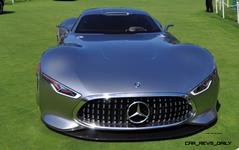
Tom Burkart is the founder and managing editor of Car-Revs-Daily.com, an innovative and rapidly-expanding automotive news magazine.
He holds a Journalism JBA degree from the University of Wisconsin – Madison. Tom currently resides in Charleston, South Carolina with his two amazing dogs, Drake and Tank.
Mr. Burkart is available for all questions and concerns by email Tom(at)car-revs-daily.com.

